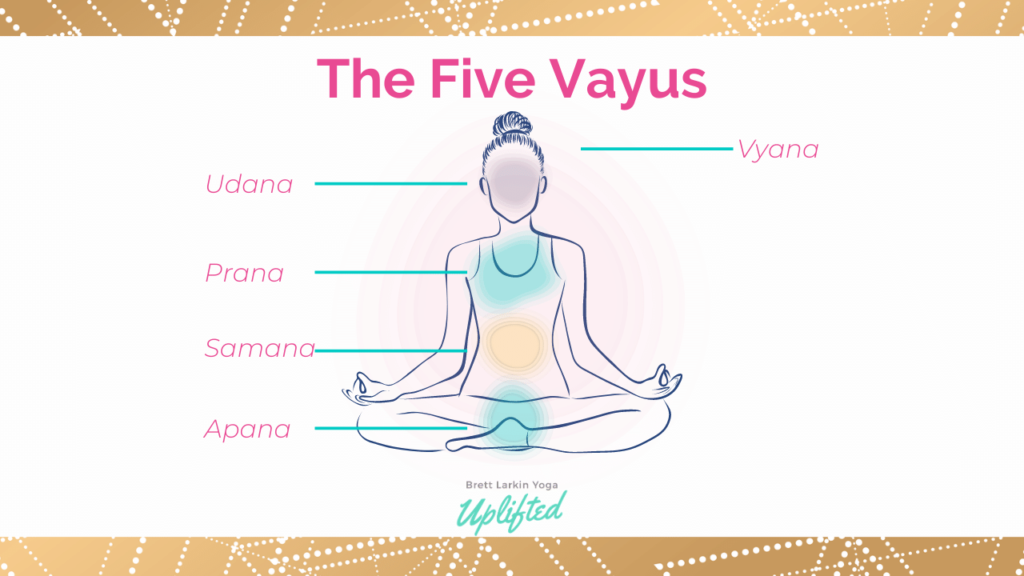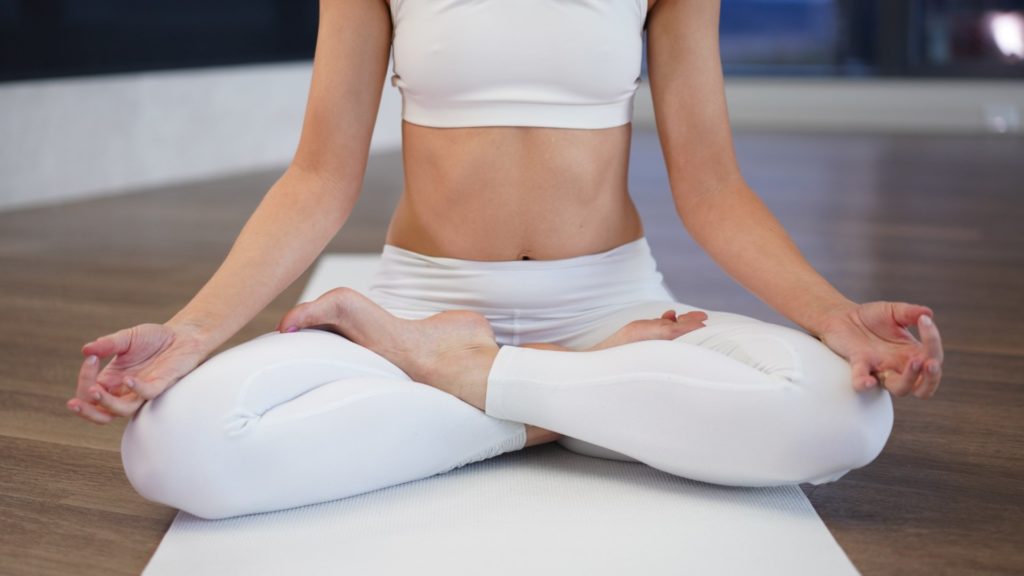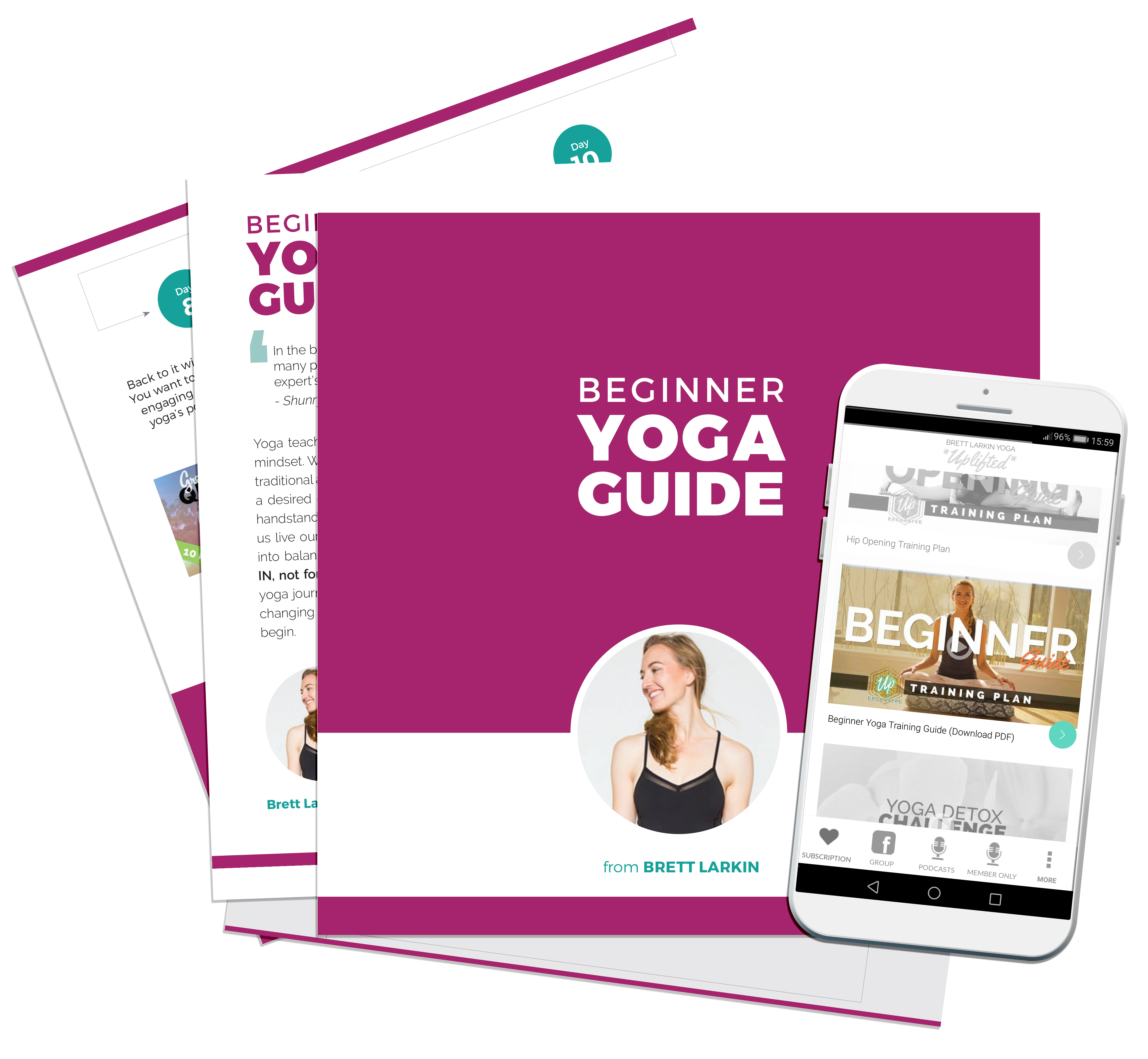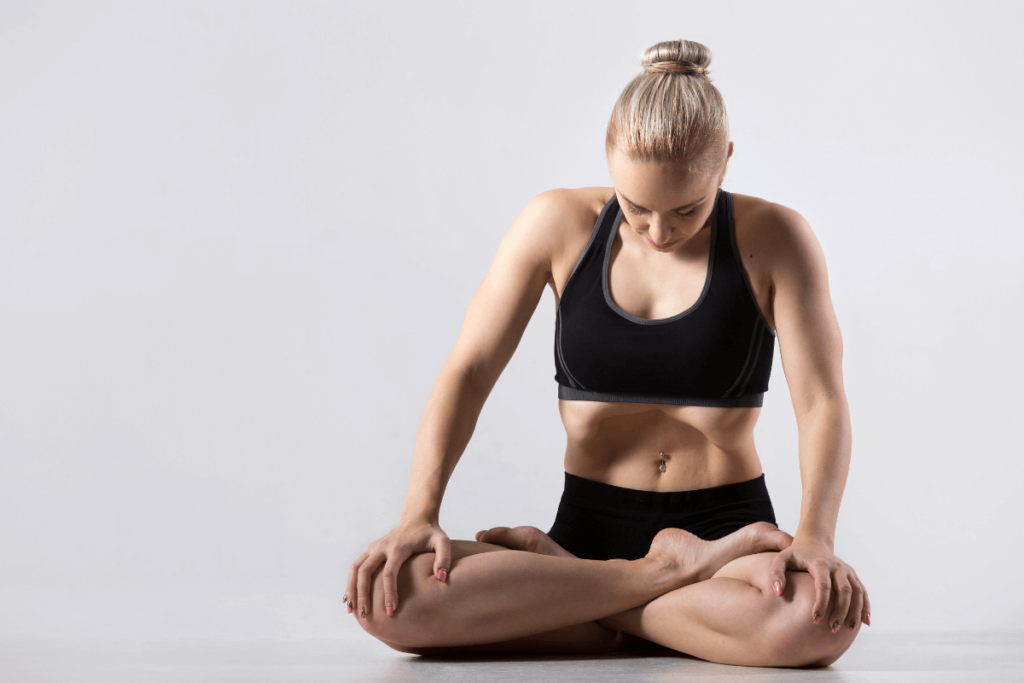
Bandhas are what yogis call energetic ‘locks’ and the Jalandhar bandha is one of the 6 main locks.
Let’s take a closer look at this specific bandha and why it can be so useful for us on and off the mat.
What is Jalandhara Bandha?
Jalandhara bandha is one of the 3 main energetic locks used in asana practice. Just like the other two bandhas, the Mula bandha, and Uddiyana bandha, the Jalandhara bandha is believed to have a powerful effect on the flow of energy in the subtle body.
Jalandhara Bandha Meaning
Jalandhara bandha is often translated as simply the ‘chin lock’. The name itself comes from the Sanskrit word, Jal meaning “throat,” Dharan, meaning “stream,” and bandha, meaning “lock.” An alternate translation is “upwards pulling net,” which alludes to the way that it contains the prana within the torso.
The Physical Jalandhara Bandha
So what exactly is happening in the body when we perform this chin/throat lock and what muscles are we using?
Physically, we are compressing the visceral part of the neck. We’re compressing and stimulating the sinuses, which, in turn, helps regulate and balance both the circulatory and respiratory systems. The throat pressure gently balances the thyroid function and parathyroid glands, helping to regulate metabolism.
As we close the throat we are using all of the smaller neck muscles to bring the chin forwards including the splenius capitis and splenius cervicis which can feel tight from all the sitting that we do (especially if we work long hours on our computers). Regular practice of this throat lock is even said to help get rid of a double chin!
A crucial aspect to Jalandhara bandha is also lifting the chest to meet the chin. This helps ease stiffness in the upper back trapezius muscles as the breath lifts the front ribs and the lungs expand on the inhale. This naturally lifts the diaphragm and spine to bring the chest upwards to meet the chin.
The Subtle Jalandhara Bandha
As well as toning the physical muscles of the neck, Jalandhara bandha helps guide the flow of prana.
In yoga, anytime we’re moving energy it’s through the five vayus or ‘winds.’ Each vayu is associated with a different function. In this case, Jalandhara bandha is connected to prana Vayu with the upward movement of energy and areas of the chest and throat.

Working with our energetic bodies strengthens our five pranas, specifically in this case our second energy dimension (pranayama kosha). When we use this bandha as traditional hatha yoga intended, Jalandhara bandha can also direct awakened kundalini energy into our central channel (Sushumna Nadi) , elevating us even further and clearing our energy centers.
This bandha’s corresponding chakra is Vishuddha, the fifth chakra centered at the throat. Vishuddha deals with communication and self expression. How willing or able are you to speak your mind with Right Intention through speech?
The Bandhas
There are 3 main bandhas found along the spine/central channel of the body; Mula (root lock), Uddiyana (abdominal lock) and Jalandhara (throat lock).
The other bandhas include maha bandha (a combination of these 3 engaged simultaneously) and the two minor bandhas; hasta bandha (the hand lock) and pada bandha (the foot lock), making 6 in total.
Mula bandha, engaging the pelvic floor, is connected to muladhara chakra, our center of survival and belonging. Moving upwards, we get to Uddiyana bandha which stimulates our digestive fire and blood flow. Finally, we reach jalandhara bandha with a more subtle state of awareness and energy.
Energetically, just like the 8 limbs of yoga, as we move up through the bandhas we are gradually bringing our attention inwards to a subtler state of awareness, aiding us in the later limbs of yoga such as dharana (concentration), dhyana (meditation), and samadhi (union.)
Why Practice Jalandhara Bandha
This bandha is often used in pranayama to refine breath retention as the very act of bringing the chin to the throat helps to focus and bring a heightened awareness, redirecting our energy to unlock our full potential.
There are many benefits and specific reasons why yogis benefit from practicing jalandhara bandha:
- Increases concentration: In kriya practice, yogis often use this throat lock to slow the blood supply, relax the mind and bring the awareness from the external to the internal, which is our goal with any yoga poses.
- Ability to hold the breath for longer: Increased lung capacity and space, helps in yoga to steady the nervous system, create feelings of lightness, and mentally prepare us for meditation.
- Awakens inner energy: By activating the Vishuddhi Chakra, jalandhara bandha is a powerful tool to work through any blockages in communication that we may be facing in our lives.
- Works the spinal cord: This bandha helps free the shoulders and aligns the upper spine properly, which can guide us in and out of the poses easier and into more variations and advanced positions safely.
How to Use Jalandhara Bandha in Asana
There are several asanas where we can find and explore Jalandhara bandha, either by contracting the throat and firmly touching the chin to the chest or in the opposite way, opening the throat and lifting the chest:
- Shoulder stand
- Plow pose
- Ear pressure pose
- Wheel pose
- Camel pose

Beginners: Start Practicing Proper Alignment for Jalandhara Bandha
It is recommended that beginners begin practicing this technique with seated breath work to fully understand the sensation safely while using these new techniques.
- Sit in a meditative starting position, on the knees is fine.
- Keep your spine straight and place your palms on your knees.
- Close your eyes and breathe normally.
- Inhale deeply, raising your chest and retain the breath for 10 seconds.
- Contract your throat muscles, bring your head forward down to your chest at the same time.
- Let your chin firmly touch the chest, ensuring that it rests between the collarbones.
- Continue holding your breath and this position for a few seconds – focus at the tip of your nose, and maintain a straight back.
- To release the lock, raise your head and exhale.

Intermediates: Build Up Your Breath Retentions
Experienced yogis comfortable with breath retention and holding Jalandhara bandha for longer periods, can progress to a more advanced pranayama practice such as Kumbhaka pranayama:
- Make a short exhalation and then start inhaling – slowly and rhythmically in one long, controlled breath.
- Continue inhaling until you experience a sense of fullness in your chest and lungs.
- Hold the breath for a period of 10 seconds (preferably double the period of inhale).
- Ensure no exaggerated movement of the abdomen.
- Engage mula bandha.
- Now exhale as naturally as possible – gradually. Avoid jerky or hasty movements.
Mastering the Pranic Body with Maha Bandha
To engage Maha Bandha or ‘The Great Lock’ is when we hold all 3 main bandhas simultaneously. First, engage Jalandhara bandha, then Uddiyana bandha, then Mula bandha, holding the breath for as long as is comfortable. The master lock purifies the pranic body, raises your vibration and rejuvenates the cells in the body.
Jalandhara Bandha Contraindications
While the jalandhara bandha is a great lock to practice in most cases, there are some situations where you really shouldn’t try it. Practitioners (and teachers!) should be aware of these contraindications before trying jalandhara bandha.
You should not practice jalandhara bandha if:
- You’re suffering from cervical spondylosis
- You have high intracranial pressure or high blood pressure.
- You have stomach or intestinal ulcers
- You have breathing problems
- You have issues related to blood circulation
Next Steps
- Take my History of Yoga Course to learn all about yogic principles and how they are applied to daily life!
- Order my Yoga Life book for a practical guide to applying yogic principles to your life and constitution.
- Check out my Yoga Philosophy knowledge hub for more inspiring content
- Join Uplifted for exclusive content that you can access right from the app. Take a deep dive into your practice with me this year!
Experience 3 Training Videos from Inside My 200-Hour Online YTT

Find more yoga sequences by benefit.
YOU MIGHT ALSO LIKE
- How to Teach Somatic Yoga: A Practical Guide for Instructors
- The Best Somatic Exercises for Grief: Find Healing Through Movement
- The Best Somatic Exercises for Anger Management and Emotional Release
- Authentic Pathways: Connecting With Higher Self for Inner Peace
- Yoga to Reconnect with Yourself: 5 Essential Practices for Inner Peace
- Yoga for Connection: 10 Poses to Deepen Relationships and Bonding
- Yoga To Connect With Your Body For Mind-Body Harmony
- Yoga to Connect with Feminine Energy: 5 Transformative Practices
- Yoga to Connect with Your Heart: 3 Poses for Emotional Balance
- Myofascial Release Yoga: Unlock Tension and Improve Flexibility
- 6 Hip Openers For Emotional Release
- Office Yoga: 10 Poses You Can Do Right Now
- Ayurveda Food Combining: The Key to Balanced Digestion
- Yoga For Grief: 8 Yoga Poses For Support
- Yoga for Vata Dosha: Practice Poses and Tips
Learn how to do 11 of the most popular yoga poses correctly. Free video + PDF download.












